
Daphnis nerii, the oleander hawk-moth or army green moth, is a moth of the family Sphingidae. It was described by Carl Linnaeus in his 1758 10th edition of Systema Naturae.
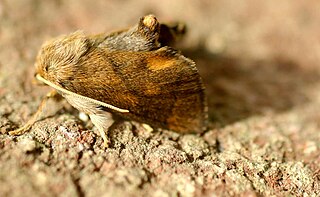
The Limacodidae or Eucleidae are a family of moths in the superfamily Zygaenoidea or the Cossoidea; the placement is in dispute. They are often called slug moths because their caterpillars bear a distinct resemblance to slugs. They are also called cup moths because of the shape of their cocoons.

The saddleback caterpillar is the larva of a species of moth native to eastern North America. It is also found in Mexico. The species belongs to the family of slug caterpillars, Limacodidae.

Parasa is a genus of moths of the family Limacodidae. It was described by Frederic Moore in 1860.

Parasa lepida, the nettle caterpillar or blue-striped nettle grub, is a moth of the family Limacodidae that was described by Pieter Cramer in 1799. It is a native minor pest found in the Indo-Malayan region, including India, Sri Lanka, Vietnam, Malaysia and Indonesia. It is an introduced pest to urban trees in western Japan.

Parasa indetermina, the stinging rose moth, is a moth of the family Limacodidae. It is found in the United States from New York to Florida, west to Missouri, Texas, and Oklahoma.

Earias insulana, the Egyptian stemborer, Egyptian bollworm, spiny bollworm or cotton spotted bollworm, is a moth of the family Nolidae. The species was first described by Jean Baptiste Boisduval in 1833. It is found in most of Africa, southern Europe, the Near East and Middle East, Japan, Taiwan, the Philippines, Australia and Hawaii. It is a rare in immigrant in Great Britain.
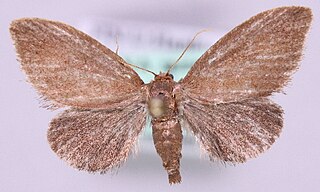
The triangle is a species of moth of the family Limacodidae. It is found in most of the Palearctic realm. The wingspan is 15–20 mm. Adults are on wing from the end of May to mid July in one generation per year.
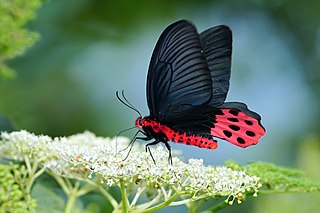
Atrophaneura horishana, the aurora swallowtail, is a species of butterfly from the family Papilionidae that is found in Taiwan.

Parasa darma is a moth of the family Limacodidae. It is found in Burma, Sundaland, Palawan and Taiwan.

Dysaethria quadricaudata is a species of moth of the family Uraniidae first described by Francis Walker in 1896. It is found in the Indo-Australian tropics from India, Sri Lanka to Myanmar, Taiwan and the Solomon Islands. The habitat consists of lowland forests and disturbed and cultivated areas.
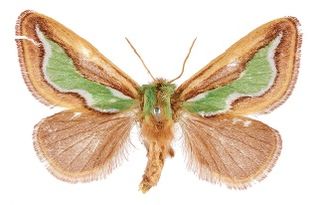
Parasa viridiflamma is a moth of the family Limacodidae. It is found in Taiwan. The habitat consists of mid-elevation mountain areas.
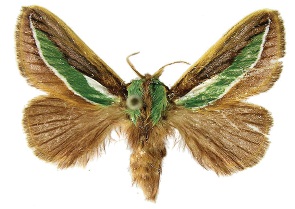
Parasa undulata is a moth of the family Limacodidae. It is found in China.

Parasa minwangi is a moth of the family Limacodidae. It is found in the Nanling Mountains of southern China. The habitat consists of mid-elevation mountain areas.

Parasa martini is a moth of the family Limacodidae. It is found in Taiwan. The habitat consists of mid-elevation mountain areas with primary vegetation.

Choristoneura longicellanus is a species of moth of the family Tortricidae. It is found in China, Japan, Taiwan, the Korean Peninsula and the Russian Far East.
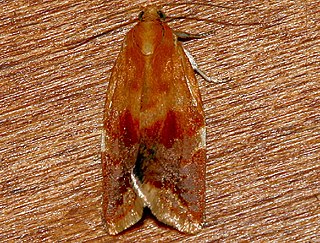
Clepsis persicana, the white triangle tortrix or the green needleworm, is a species of moth of the family Tortricidae. It is found in North America, where it has been recorded from Alaska and British Columbia to Newfoundland and south to Virginia and west to California. The habitat consists of coniferous and mixed coniferous forests.
Spruce sawflies are various sawfly species found in North America that feed on spruce. There are multiple species of sawflies known as spruce sawflies, including species in the genera Gilpinia, Pikonema, Pristiphora, and Cephalcia. Each kind of sawfly attacks particular parts of the spruce as larvae during different times of the year.

Parasa bicolor, the green rice moth, is a moth of the family Limacodidae. The species was first described by Francis Walker in 1855. It is found in Sri Lanka, India, Nepal, Pakistan, Myanmar, Laos, Taiwan, Vietnam, Malaysia, Java, China and Taiwan.
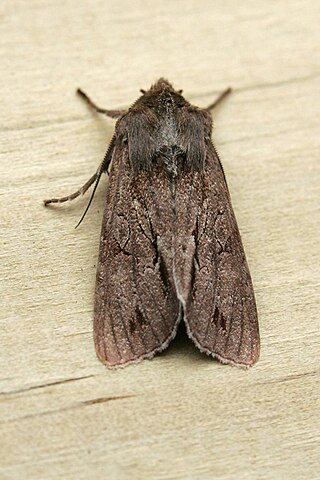
Ichneutica rufistriga is a moth of the family Noctuidae. This species is endemic to New Zealand and is only found in the Antipodes Islands. The larvae of I. rufistriga feed on various host species including Urtica australis and have been reared on Rumex obtusifolius, Stellaria media and Rheum rhabarbarum. It has been hypothesised the larvae might also feed on Austroblechnum durum. The larvae pupate in a cocoon buried in the soil. In captivity it took 12 weeks to raise a generation from egg to adult. Adults of this species have been recorded as being on the wing from October to February.






















